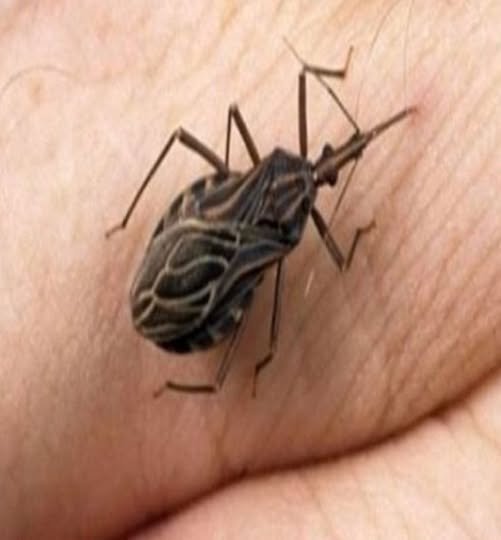
In our homes, the presence of certain insects can be a simple nuisance, but in other cases, they can pose a serious health hazard. One of these insects is the chinchilla bug , a vector of Chagas disease, which can have serious consequences if not controlled promptly.

What is the stink bug and why is it dangerous?
The stink bug, also known as Triatoma infestans , is a hematophagous insect, meaning it feeds on the blood of mammals, including humans. This insect is the main transmitter of the parasite Trypanosoma cruzi , responsible for Chagas disease, a condition that can cause serious heart and digestive problems if not treated properly.
The problem is that after biting its victim, the bedbug defecates near the wound, and if the person scratches or touches the affected area, the parasite can enter the body through mucous membranes or open wounds.
How to identify the stink bug?
To avoid risks, it is essential to know how to identify this dangerous insect:
- Elongated shape with a dark brown or black body and reddish or orange edges.
- Cone-shaped head and long antennae.
- Well-developed wings , allowing them to fly.
- Nocturnal habits , as they usually bite their victims while they sleep.
- They hide in crevices and dark places , such as behind furniture, thatched roofs, or cracks in walls.
Where are bed bugs found?
These insects are usually found in rural or peri-urban areas, especially in homes made of materials such as adobe or palm thatch. However, they can also appear in urban environments if they find suitable shelters.
Some places where they can hide include:
- Cracks in walls and ceilings.
- Under mattresses and furniture.
- Behind paintings or curtains.
- In chicken coops, stables and pet shelters.
What to do if you find a bed bug in your home?
If you notice this insect in your home, don’t attempt to eliminate it yourself . It’s vital to contact professional pest control services immediately , as improper handling can spread the problem.
Recommended steps:
- Don’t touch the insect with your bare hands. Use gloves or a jar to catch it without crushing it.
- Keep it in a sealed container and take it to a health center or laboratory for identification.
- Clean and seal cracks in walls and ceilings to prevent future infestations.
- Keep the house clean and tidy , avoiding the accumulation of objects where they can hide.
- Consult a fumigation expert to assess the level of infestation and apply effective treatments.
How to prevent the presence of the biting bug?
Prevention is key to avoiding the risk of contracting Chagas disease. Here are some helpful tips:
- Check your home regularly , especially bedrooms and dark areas.
- Seals cracks and holes in walls, ceilings and floors.
- Use mosquito nets and mesh screens on windows and doors to prevent insects from entering.
- Maintain good hygiene at home and in the environment.
- Avoid accumulating firewood, debris, or materials in which they can hide.
Conclusion
The chinch bug is not to be taken lightly. Its presence in the home poses a significant health risk due to its ability to transmit Chagas disease. If you see one in your home, don’t hesitate to contact pest control experts and take preventive measures to protect your family. Quick action can make the difference between a safe home and a latent health threat.


